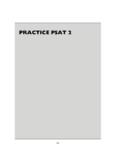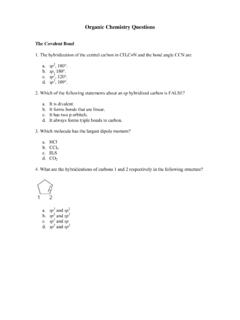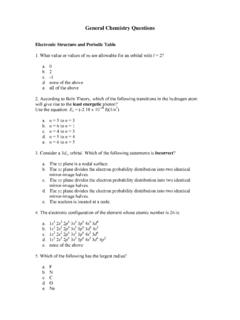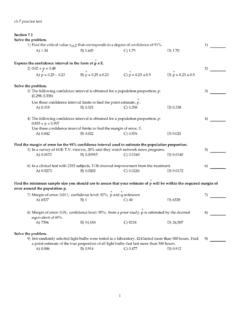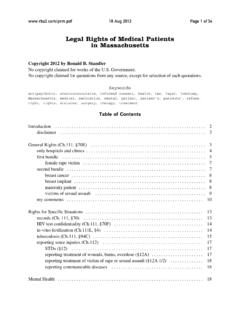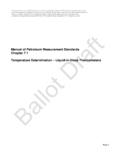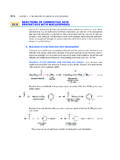Transcription of PRACTICE TEST 5 - McGraw Hill Financial
1 PRACTICE TEST 5519 ANSWER SHEETLast Name: _____ First Name:_____Date: _____ Testing Location:_____Administering the Test Remove this answer sheetfrom the book and use it to record your answers to this test. This test will require2 hours and 10 minutesto complete. Take this test in one sitting. Use a stopwatch to time yourself on each section . The time limit for each section is written clearly at thebeginning of each section . The first four sections are 25 minutes long, and the last section is 30 minutes long. Each response mustcompletely fill the all stray marks completely, or they may be inter-preted as responses. You must stop ALL work on a section when time is called. If you finish a section before the time has elapsed, check your work on that may NOT move onto the next section until time is called.
2 Do not waste time on questions that seem too difficult for you. Use the test book for scratchwork, but you will only receive credit for answers that are marked on theanswer the Test Your scaled score, which will be determined from a conversion table, is based on your raw score for eachsection. You will receive one point toward your raw score for every correct answer. You will receive no points toward your raw score for an omitted question. For each wrong answer on a multiple-choice question, your raw score will be reduced by 1/4 point. Foreach wrong answer on a numerical grid-in question ( section 4, questions 29 38), your raw score willreceive no 14 / PRACTICE PSAT 5521522 McGraw -HILL S PSAT/NMSQTS ection 1 Time 25 minutes24 Questions (1 24)Each sentence below has one or two blanks, each blank indicating that something has been the sentence are five words or sets of words labeled A through E.
3 Choose the word or set ofwords that, when inserted in the sentence,best fits the meaning of the sentence as a :Medieval kingdoms did not become constitutional republics overnight; on the contrary, the changewas ------.(A) unpopular(B) unexpected(C) advantageous(D) sufficient(E) gradualCorrect response: (E)B1 Sanzianna s------that something awful hadhappened to her mother proved to be - - - - - -;her mother did not answer the phone forthree days because the battery in her phonehad run out.(A) disbelief::incorrect(B) intuition::accurate(C) obsession::authentic(D) denial::interesting(E) premonition::falseB2 Grace was not surprised to find out thatLydia waited until the last possible momentto turn in her term paper; Lydia had alwaysbeen one to.
4 (A) procrastinate(B) pontificate(C) meddle(D) articulate(E) testifyB3 Originally designed as a medicine to assist inthe - - - - - - of elevated blood pressure, Minoxi-dil was found to have the - - - - - - effect ofincreasing hair growth and revolutionizedthe science of hair replacement.(A) eradication::anticipated(B) magnification::adjunct(C) mitigation::unforeseen(D) modernization::extraneous(E) enhancement::superciliousB4 Behavioral psychologists suggest that thewhining, kicking, screaming, and hittingthat accompany a temper tantrum are - - - - - -displays that are a normal part of a child sdevelopment.(A) meticulous(B) callous(C) somber(D) histrionic(E) wistfulB5In the wild, the dominance hierarchy amongmembers of a chimpanzee group can be- - - - - - determined through the tracking ofagonistic behaviors such as - - - - - -, an actionby which a higher-ranked individual takesthe spot of another, often at a preferredfeeding source.
5 (A) definitively::transmutation(B) empirically::supplanting(C) ambiguously::exhortation(D) nefariously::benediction(E) incontrovertibly::jurisdictionGO ON TO THE NEXT PAGE z 1 CHAPTER 14 / PRACTICE PSAT 5523 The passages below are followed by questionsbased on their content or the relationshipbetween the passages. Answer the questionson the basis of what is stated or implied inthe passages or the introductory materialpreceding 6 9 are based on thefollowing 1 PavlovLinediscovered that dogs would salivate notonly when food was placed in their mouths, butalso when they simply saw the person who wasto feed them. His student, Anton Snarsky,sought to attribute this5fact to the highermental abilities of the dogs, namely theirthoughts, feelings and desires.
6 Pavlov rejectedcompletely any such mentalistic interpretation. He believed that physiologyalone,10without the help of psychology or anappeal to consciousness, could explain thisPavlovian conditioning. In Pavlov s view, thetemporary association between the visualstimulus of the feeder and the salivary responsewas simply a modification of a 2 Pavlov realized that the actions of the dog ssalivary glands and the actions of the dog sstomach were both under the control of theautonomic nervous system, and hence probablylinked by reflexes. In his inves20tigations of thislink, he discovered that the dogs did not need totaste, see, or even smell their food in order tobegin salivating. They could be made to salivateby the sound of a metronome, which had25previously only sounded when the food wasabout to be presented.
7 In addition to showingthat dogs could be taught, or conditioned, tosalivate in the presence of almost anyassociated stimulus, Pavlov also showed thatthis associ30ation is pliable, and can be repressedif the conditioned stimulus fails over anextended period. If the food stops comingwhen the metronome sounds, the salivationeventually stops two passages differ in emphasis primar-ily in that Passage 1 focuses on(A) a theoretical dispute, while Passage 2focuses on the nature of an investigation(B) a broad historical setting, while Passage2 focuses on a single person(C) the positive aspects of a theory, whilePassage 2 focuses on the negative as-pects of the same theory(D) the analysis of the scientific method ingeneral, while Passage 2 focuses on aspecific theory(E) experimental equipment, while Passage2 focuses on an experimental methodB7 The quotation marks around the word con-sciousness (line 11)
8 Suggest that this term(A) is usually stressed when spoken aloud(B) is being adapted from another language(C) is being used to mean the opposite ofwhat it originally meant(D) was coined by Pavlov(E) was not held in high regard by PavlovB8 Both passages indicate that(A) conditioned responses are not neces-sarily permanent(B) some scientists questioned Pavlov stheory of conditioning(C) visual stimuli elicit a more powerfulreaction in dogs than do auditory stimuli(D) dogs are highly intelligent(E) physiology is an aspect of psychologyB9As it is used in line 31, the word fails mostnearly means(A) is not measured with precise instruments(B) ceases to be associated with food(C) is not properly interpreted by theexperimenter(D) does not occur(E) is not accepted by other scientistsGO ON TO THE NEXT PAGE z 1524 McGraw -HILL S PSAT/NMSQTThe questions below are based on the contentof the passage that precedes them.
9 The ques-tions are to be answered on the basis of whatis stated or implied in the passage or the intro-ductory material that precedes the 10 17 are based on thefollowing following passage is an excerpt from acollection of works that describes variousseafaring throw a stone into a pond, the pattern ofripples that is set up will be disturbed by anyrocks that break the surface. If you also had achart or photograph of all these ripples and aknowledge of math5ematics, it would be possibleto calculate the positions of all the rocks. Nowsubstitute an ocean for the pond and islandsfor the rocks, and you can apply the samemathematical principles to pinpoint thelocation of an is10land 100 miles away. Aboutthree thousand years ago the ability to read themessages of the waves in this way allowed arace of master navigators to sail to, andcolonize, almost every habitable island acrossthe Polynesians had no maps or sea chartsto guide them, neither did they have compasses,sextants, or telescopes; there was not even awritten language by which they could pass onthe lessons o20f hard-won experience.
10 Yet over aperiod of some thousand years they populateda huge triangular area covering more than7 million square miles of ocean, from EasterIsland in the east to Hawaii in the north andNew Zealand in achieved this incredible feat simplyby means of intelligent observation. Theseseafarers had noticed that when waves hit anisland some of them were reflected back in thedirection from which30they had come, whileothers were deflected, continuing on the otherside of the island but in an altered form. Bycontinued observation these people built up avast store of knowledge about wave behavior sodetailed35that they could accurately judge, fromthe pattern of an island s reflected and deflectedwaves, its location 100 miles European sailors first encounteredthe strange interlocking web of bamboo sticksknown as mattang, they thought it was a40primitive type of map; but in fact theseconstructions were devices for teaching islandboys the principles of wave motion.

